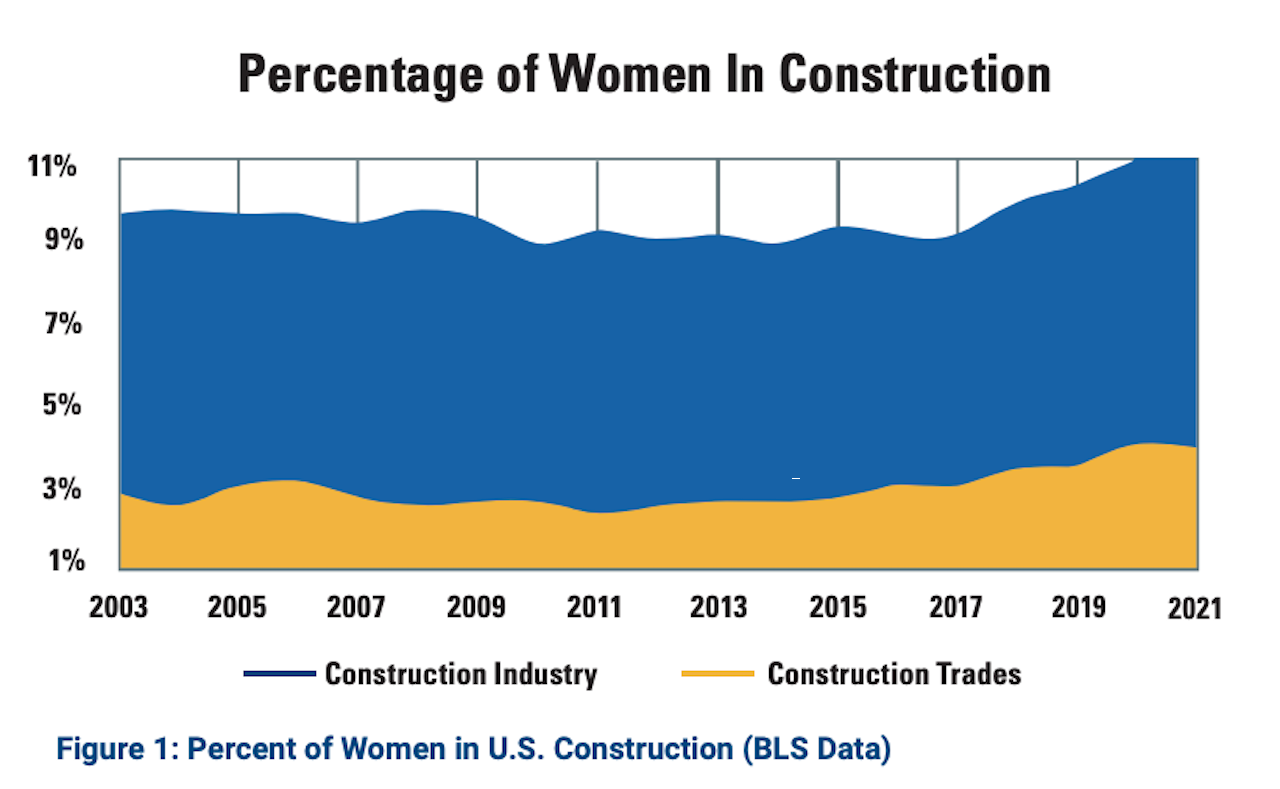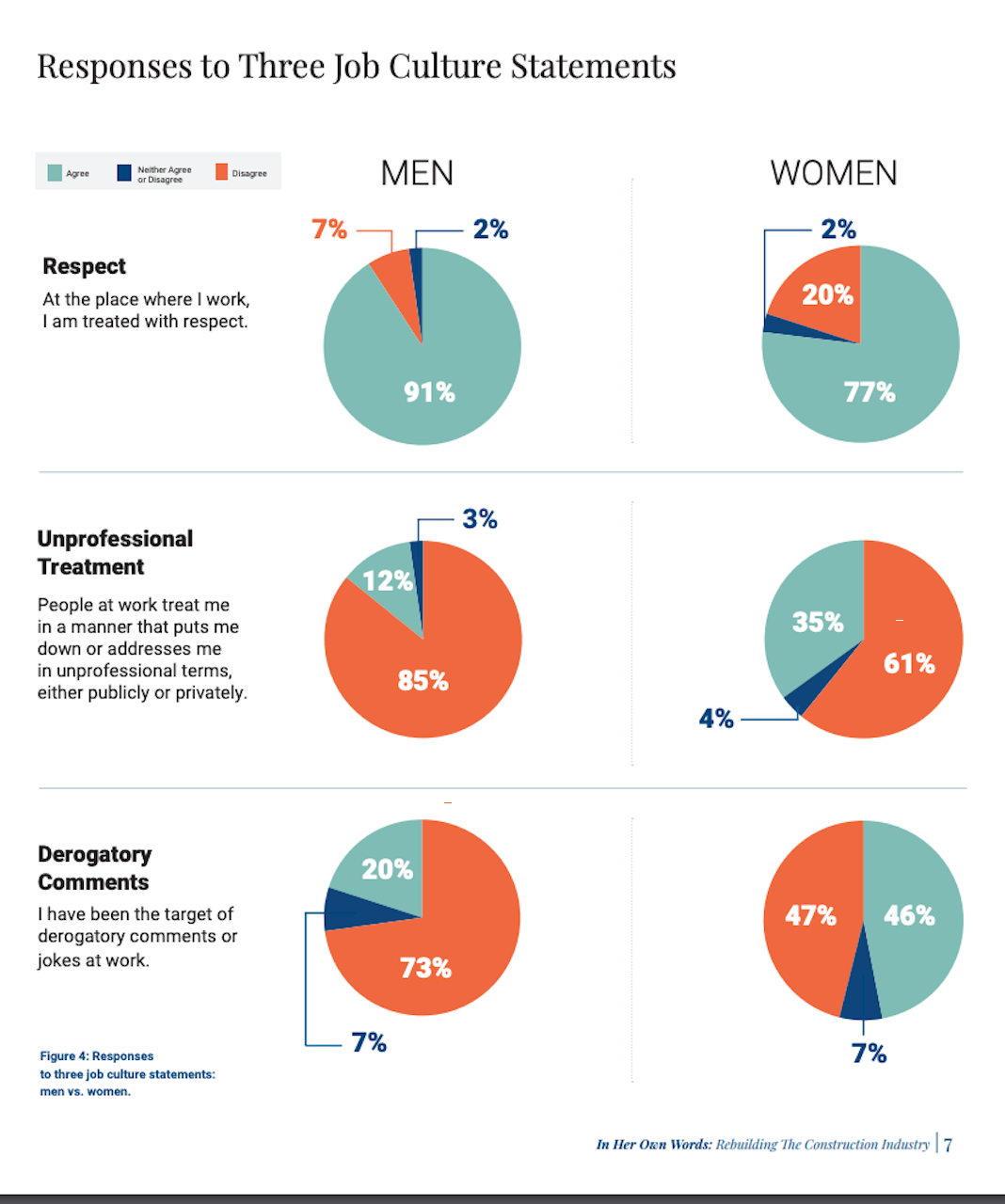Leadership
Ways Out of Housing's 'Vicious Circle' Crisis: #2 Women On Job Sites
The opposite of nimbleness, agility, and resilience – the alternative to construction and real estate's capacity to adapt to a changing business, economic, environmental, and consumer demand climate – is fragility.

The great volatility era is here.
Its roots trace to when cases of Covid-19 started to go haywire in early 2020. Its arrival was delayed – not prevented – by trillions of dollars of federal stimulus, stabilization, and accommodation. Yet, here we are.
- Uncertainty runs through every domain
- What's been strong economically is showing signs of weakness
- What was languishing has been showing signs of vigor
- The conditions that normally drive healthy housing demand are present, but may be trapped in a vicious circle of supply constraint
- A decade-plus run-up of growth is distorting clear recognition what's going on now and what will happen next
- Global instability is intense and growing more so
- Your reasons for optimism or pessimism about housing's near-term trajectory self-confirm
Andreessen Horowitz venture capital co-founder Marc Andreessen writes, per Fortune:
The prices of education, health care, and housing as well as anything provided or controlled by the government are going to the moon, even as those sectors are technologically stagnant." What’s more, very little is being done to address this problem, he writes: “We are heading into a world where a flat-screen TV that covers your entire wall costs $100, and a four-year college degree costs $1 million, and nobody has anything even resembling a proposal on how to systemically fix this.”
For all the given wisdom, time-tested experience, and knowledge out there in the community, most of the wisest and most experienced ones we know express that now is the trickier time of "unknowns and unknown unknowns" they've ever encountered.
Even hazarding a guess that "it could go either way" feels to some like it's going too far in the direction of asserting certainty. "It's anyone's guess," may – after all – be dead wrong. The only questions about the "great volatility era" are how long it will last, and how disruptively it will behave.
The stack of challenges – labor, lots, lending, supply chains, zoning and political will, economics, environmental, etc. – stand in many of our minds in measures equal to the opportunity evidenced in sheer household demographics and its impact as a multi-sector economic driver, as well as an undying power of the desire, motivation, and resolve to live in and/or own a home.
Volatility, turbulence, gyrations, and bumps stand to make the next six months to two years an era all about who and what can weather a protracted time period of shocks and stresses and who can't. Those who can are ones with a baseline financial durability to focus on learning as much as on tapping what is known.
Nimbleness, agility, and resilience – owing to a blend of deep, patient financial capital and an equally robust and adaptive human capital – are non-negotiables to thrive, not just through the high-volatility near-term. But also, into and through the longstanding chronic challenges of making homes and communities more affordable, better equipped to deal with natural hazards, safer, healthier, and more sustainable.
The opposite of nimbleness, agility, and resilience – the alternative to construction and real estate's capacity to adapt to a changing business, economic, environmental, and consumer demand climate – is fragility, brittleness.
A clear sign that fragility is a real and present risk – and a brightline moment of opportunity – shows through in this chart:

Business and practice leaders – mostly men -- have said forever that homebuilding development and real estate is a people business. The 2020s, then, will need to serve as an inflection point giving new meaning to that declaration and the values that live underneath it.
[This is the second of a multipart The Builder's Daily series on "Ways Out Of Housing's 'Vicious Circle' Crisis. Here's the first part.]
For resilient rather than fragile outcomes, that tipping point challenges building's community of practice culture to evolve or risk a brittleness that may be existential.
With an expected shortage of 1.9 million craft professionals through 2025, there is tremendous opportunity for women to get involved in an industry that offers competitive wages, benefits, and career growth,” said Jennifer Wilkerson, NCCER Vice President of Innovation and Advancement. “If we want construction careers to be a viable option for all people, we have to change the culture and perception of our industry, starting with our own projects."
NCCER is unveiling a new white paper, In Her Own Words: Improving Project Outcomes, as a call to action that highlights the benefits women bring to the construction workforce, the obstacles they encounter getting in and staying in the industry, and their advice on what contractors can do to recruit and retain more women.
The obstacles aren't hard to grasp; nor would they take rocket scientists to figure out and solve. They come down to three areas of job site safety, health, and productivity:

The report notes:
Despite repeated efforts over the years, the construction industry still struggles with discrimination and harassment. Although progress in addressing these issues has improved in the office environment, it has not adequately improved in the field. In fact, based on our research, sexual harassment is still identified as the number one issue in the field that construction leaders need to address (Figure 3). Further supporting this point, a survey of 2,740 craft professionals (94.7% men and 5.1% women) from all 50 states were asked to describe their jobsite experience from “agree” to “disagree” in relation to the following categories: respect, unprofessional treatment, and derogatory comments.
In a time of heightened and sustained volatility, outcomes will depend as much on the people capital organizations can tap into and bring into action, as on financial capital. As much as it can be said that severe financial capital constraint exposes a firm to greater risk, the same goes for people capital.
It's no time to backslide on investments and commitments that ensure your firm's ability to navigate and respond with resliency in the turbulent times ahead. Especially when the out of pocket cost of that investment and commitment is merely remembering and practicing the Golden Rule and Common Sense.
The report concludes:
If we want construction careers to be a viable option, we have to change not only the culture of our companies and projects, but we also have to change the culture and perception of our industry. This starts with recognizing that we are not effectively appealing to the largest percentage of the population. We need to create a work environment that actively addresses issues such as the elimination of harassment and discrimination, support for childcare, more training, and more leadership opportunities for women at the project level. Our project sites must become places where we are comfortable having our wives, sisters, and daughters working. This will not happen overnight, but we can be sure it will not happen at all if we do not make intentional and visible changes."
Construction, development, investment, design, and real estate leaders are big on prioritizing focus on "the things we do control." This is one of them.
MORE IN Leadership
10 Bold Ideas Tackling Housing Affordability And Access Now
From AI to hempcrete, these 10 ideas show how innovation in design, finance, and policy can open the door to housing affordability.
Sumitomo Forestry Sharpens U.S. Focus With DRB Move
Strategic clarity replaces portfolio sprawl as Sumitomo bets big on U.S. scale and integration.
Homebuilders and Insurance: A New-Reality Cost To Stay Ahead
Exclusive insights from Westwood Insurance Agency’s Alan Umaly and MSI’s Naimish Patel reveal why homebuilders must rethink insurance, resilience, and risk management—or risk losing buyers in an increasingly volatile market.
